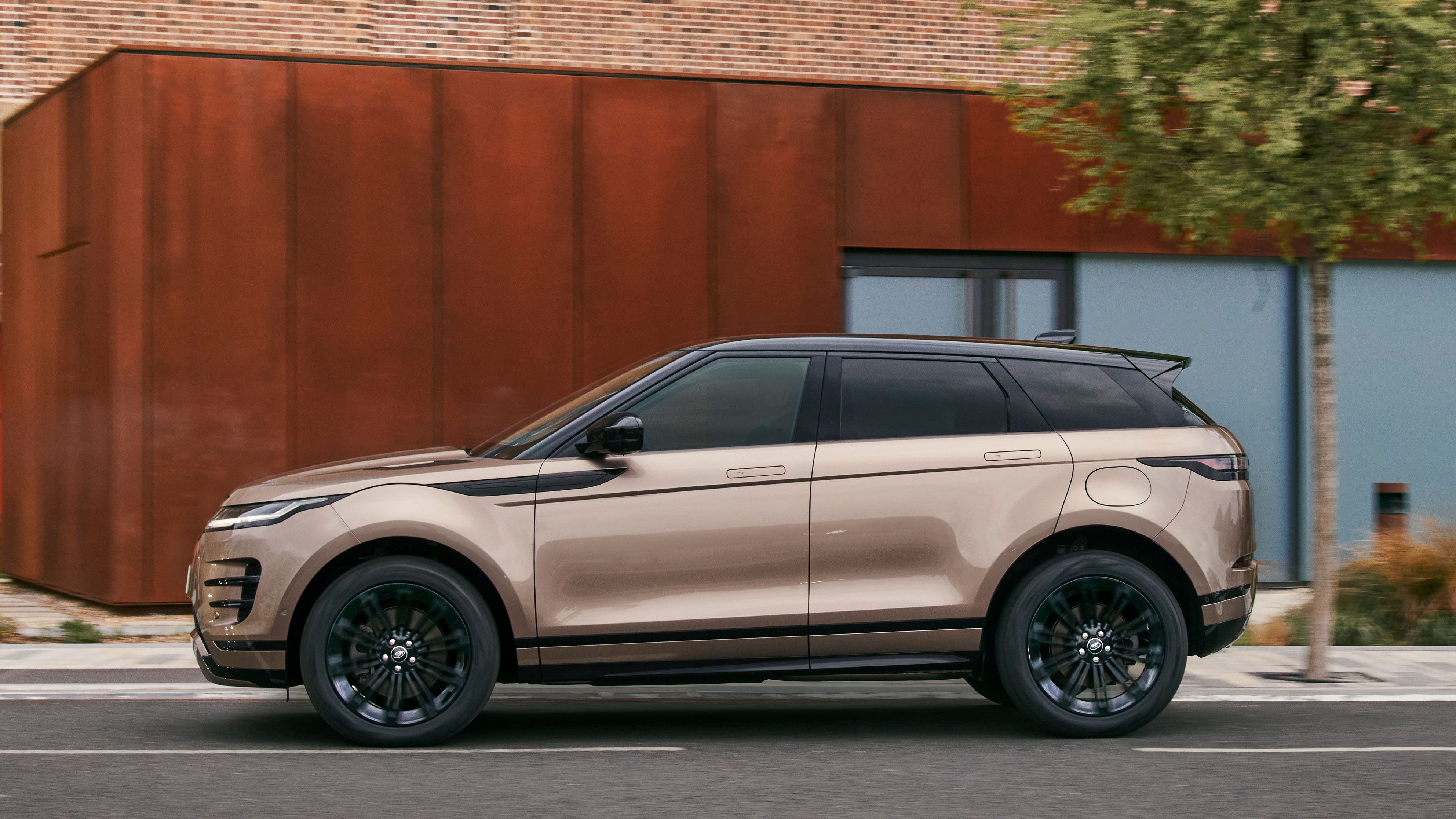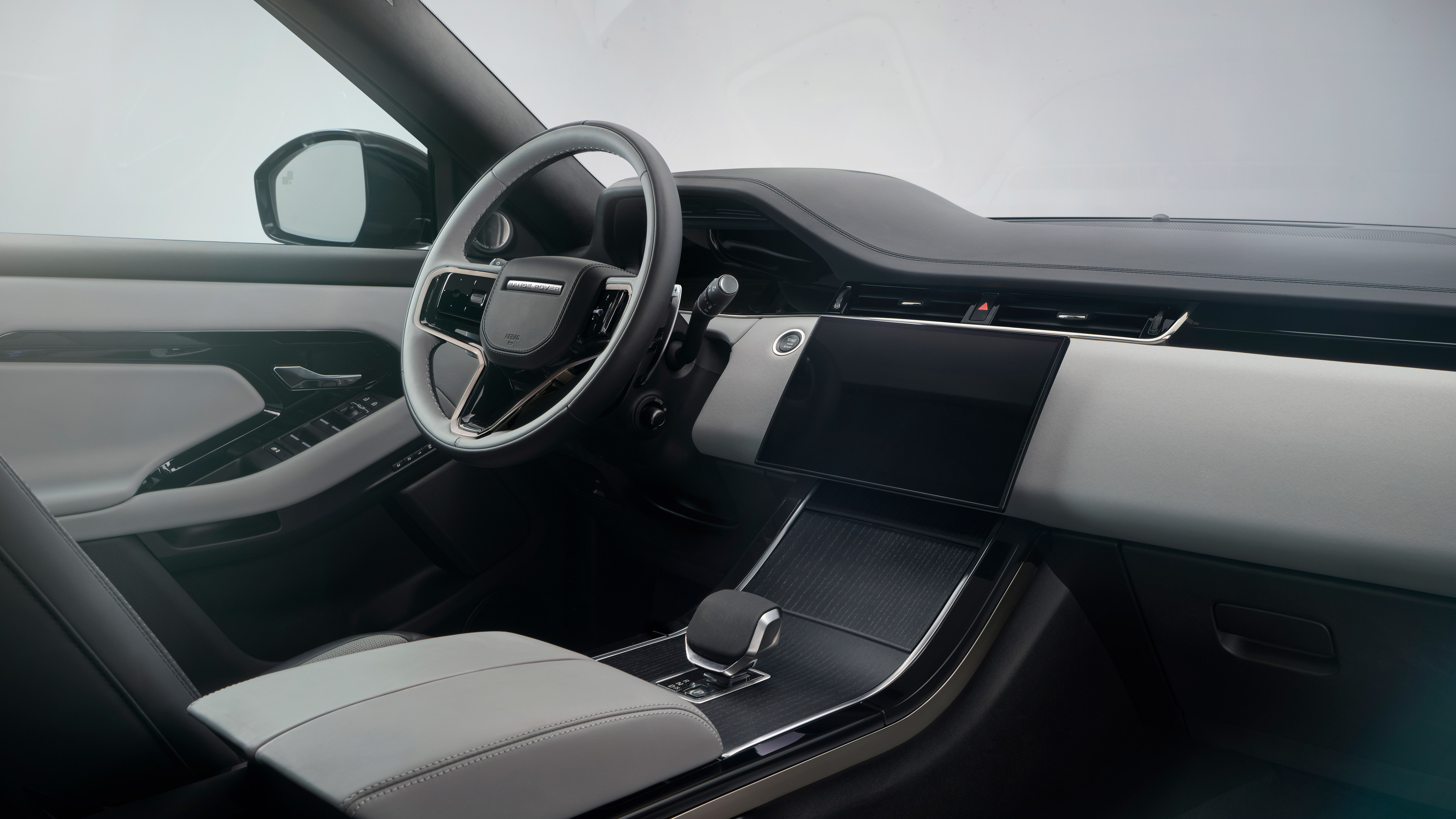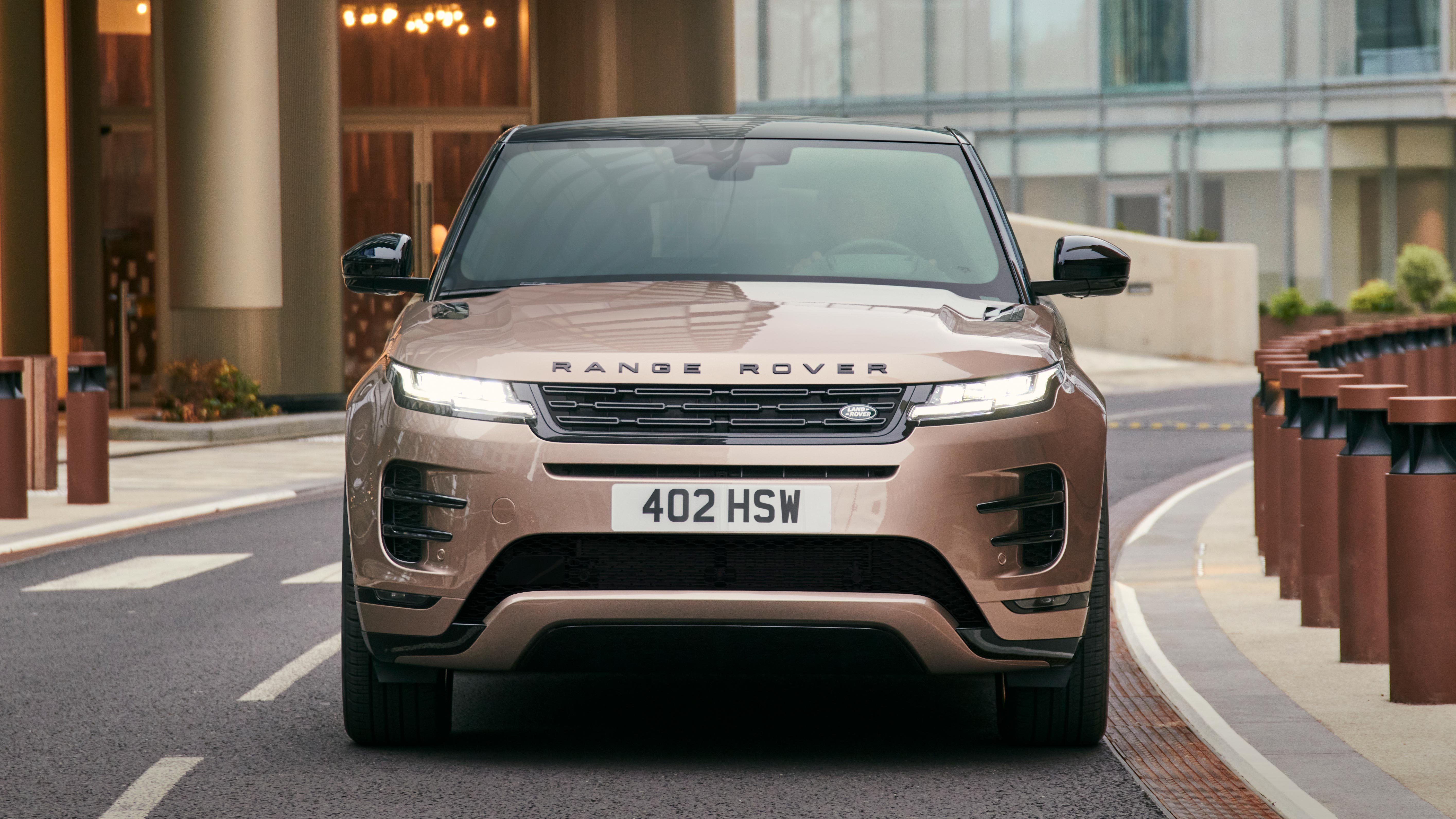
Interior
What is it like on the inside?
Range Rover does a fine modern-lux environment. The theme is strong minimalism. Cladding the surfaces are smart, plush leather options with good colour choices. If you don't care to park your backside on that, then go for one of the fabric options.
JLR is keen to stress that the Evoque is the only SUV in its class available with Kvadrat, locally-sourced, wool-blend fabric. It's also been through 60,000 cycles of abrasion testing – the equivalent of 10 years of use – with UV testing that simulates three years’ exposure to harsh sunlight in just one month. In other words, it shouldn’t fade over time. Good news.
What's the tech like?
The Evoque has adopted an 11.4in curved touchscreen featuring the firm’s latest Pivi Pro operating system, with all major controls now integrated into the screen.
There’s no doubt it looks the part with its smart design and razor-sharp graphics, and it mostly works well. But pre-facelift, there were two central screens stacked one above the other, with the lower one used to control the climate settings; two rotate-and-push knobs added a welcome tactile aspect. Now, the only physical control on the centre console is the gear selector. Boo.
Shortcuts for things like the audio, climate control and navigation are always visible via sidebars, complete with click and hold sliding controls. But adjusting things still requires more thought than it really should. It’s not the worst system we’ve tried, but it's not better than it was before. Might even be worse.
Quick note on those steering wheel controls: they may look like touch sensitive thingies, but thankfully they're just regular buttons. The most painful thing about them is that they’re particularly fingerprint prone. Phew.
Does it have any fancy toys?
The optional Ground View system, for one. Cameras embedded around the front of the car feed the screen with an image of the area down between and forward of the front wheels. Imagine the bonnet and engine bay were glass. As usual Range Rover portrays it as an off-road aid, for avoiding boulders and crevasses. IRL, you'll use it to steer between city width restrictors without kerbing the wheels.
The rearview mirror can also be camera-linked, showing an image feed from a camera behind the roof aerial. It shows a usefully wide angle (the Evoque's rear glass is tiny) and lets you see past rear passengers or a boot packed to the roof. But it does mean your eyes have to re-focus from the road to the rear-view picture. That can be tiring, especially at night. Not an issue you'd have with a standard mirror.
The mid-life facelift also introduced fancy air filtration tech for the first time to the Evoque. Land Rover claims this increases driver alertness by monitoring and controlling CO2 levels inside the cabin.
How spacious is it?
A Range Rover's driving position is meant to be commanding, and this one does feel high without being wobbly or vertiginous. The seats support you snugly, but in the back space is very much limited, particularly for legroom. And the roof and pillars crowd in a bit, owing to the rakish roofline.
Still, there's at least generous room for any bits and bobs. Under the centre armrest lives a deep bin, and there's also a cubby box in place of the old secondary screen (now home to the wireless charger), plus big door bins.
The boot, measuring 591 litres seats up and 1,383 litres seats down, is also bigger than what you'll find in the Audi Q3, BMW X2, Mercedes GLC, Porsche Macan, and Volvo XC40. The floor sits parallel with the boot lip, but you do get space under it for any dirty charging cables in the PHEV, with a split-folding floor allowing for easy access.
Featured

Trending this week
- Car Review
BMW 1 Series
- Top Gear's Top 9
Nine dreadful bits of 'homeware' made by carmakers






